Saranphong Pramsane, Ph.D.
Graduate School of Information Technology,
Assumption University, Bangkok, Thailand
prammicester@hotmail.com
Ridwan Sanjaya
Soegijapranata Catholic University,
Semarang, Indonesia
mail2ridwan@yahoo.com
Abstract
This paper presents a development of education services based on Short Message Service (SMS). The university as educational organization has many valuable information which can be provided to the students, such as grade release, enrollment information, university announcement, and internship opportunity. The objective of this paper is to develop their own education services based on SMS to support their student’s need of information. If the university can provide them on the SMS service, the students can get the information easier and faster. They can request the information from the service provider at their own convenient time through their cellular phones. The result of this study shows the implementation of the mobile education services using mobile phone, including its performance analysis.
Keywords
Short Message Services, SMS, Education Services, Content Provider, Cellular Phone, Mobile Phone.
*) Published in Special Issue of the International Journal of the Computer, the Internet and Management (IJCIM), Vol. 14 No.SP1, Assumption University of Thailand, August, 2006, ISSN: 0858-7027.
**) Presented at The Third International Conference on E-Learning for Knowledge-Based Society held at Bangkok, Thailand on August 4, 2006.
 PDF Version [Download]
PDF Version [Download]
1. Introduction
Wireless mobile application can be differentiated by two underlying technology platforms: wireless web-based technology, such as Wireless Application Protocol (WAP), and text-based technology or Short Message Services (SMS). SMS is a basic and common feature given by cellular operators to users. To use WAP feature, users have to activate GPRS facility and they have to use mobile phone which has WAP capability.
Recently, the growing influence of SMS has attracted significant attention. As a convenient and low-cost mobile communication technology, SMS is experiencing very rapid growth. In 2001, 700 million mobile phone users worldwide sent an average of 20 billion SMS messages every month. Indeed, the volume of SMS messages sent in December 2001 was 30 billion worldwide and it was expected to grow to 100 billion by the end of 2002. In Europe, Norway leads the region with an average of 47 messages sent per month per user in 2001 while Philippines lead the Asia-Pacific region with 336 SMS messages [4].
The worldwide increasing growth of SMS messaging services has spurred the developments of SMS commerce applications, which mainly cover consumer-orientated business such as alerting, ticket booking and retailing. Given that the huge SMS messaging customer base could potentially serve as major component of the SMS-commerce customer base, many commerce providers are becoming more interested in SMS commerce applications.
The university as an educational organization has many valuable information which can be provided to the students, such as (1) grade release, (2) enrollment information, (3) university announcement, and (4) internship opportunity. If the university can provide them on the SMS service, the students can get the information easier and faster. They can request the information from the service provider at their own convenient time through their cell phones.
There are two kinds of services which can be built to distribute the information through SMS:
(1) Independent Service. It is created by the university itself using one cell phone and one server.
Figure 1. Independent Service
(2) Dependent Service. The university only provides one server and 24/7 internet connection. However, there is a need for an agreement between the university and the cellular operator to provide the service.
Figure 2. Dependent Service
Both of them services have their own benefits and difficulties in the different levels which depend on the institutional condition. The choice will also affect both the cost and the pricing in providing the service.
2. Existing System Overview
The Assumption University has provided the education information services based on website since 2005. Some information such as academic record, enrollment information, and personal information can be accessed at http://www.eai.au.edu.
Some tables are used by the system to provide that information. To provide the academic report, enrollment information, and personal information, the existing system use Informix Database that includes Student table, StudyCourses table, StudyGrade table.
On the existing system, the users can get the information only from the web browser, which is provided by computer, PDA, and several high-end mobile phones. Not every mobile phone can access this system and the users must activate the GPRS facility to access the website from mobile phone. The proposed system is offering the SMS service which can be used by all the mobile phones. User only sends the SMS to the system and the system will reply the answer back to the user as an SMS also.
3. Proposed System Overview
Before students can use the services, they must pay the services through the website. (1) Students can pay the services using credit cards or bank transfer. Based on the payment, user will get points or add the user’s balance which will be used to use the services. (2) After that, students can use the services and send the request to the SMS server. SMS server will check the ID and password and compare to the student database. (3) If the ID and password are correct, server will check user’s balance. If there are enough points, server will check the answer based on user’s request. (4) The answer will be sent to the user and the user’s balance will be deducted.
Figure 3. A whole processes on the system
For the first time, the University can use one mobile phone and one server as a SMS server (independent service). Database server also can be connected to the SMS server to supply data. If the user sends a request through SMS, the mobile network will receives it and sends it again to the SMS server mobile phone receiver. The SMS will be processed on the SMS server.
Figure 4. Conceptual Model
SMS server will read the message from mobile phone receiver and it will compare the message and the answer from the university database. The result will be sent to the user through the mobile phone on the server.
Figure 5. Illustration Request and Answer
The steps of reading and sending the SMS on the server show on the Figure 6. Those steps are (1) Frequently, server will check the SMS from the mobile phone and translate from PDU format into plain text. In the PDU mode, a complete SMS Message including all header information is passed as a binary string [4]. (2) The translation message will be read and divide into three parts (Student ID, Password, and Keyword). Then, the Student ID and Password will be compared with data on the Authentication table. (3) If match, the system will check the balance. But if not match, the SMS will be ignored. (4) If there are enough points to be used, the system will process the request and compare the keyword with the available services. If not available, system will send a SMS warning to the user. Otherwise, the system will query the answer from the database, (5) translate from plain text into PDU format, and (6) send he answer back to the user.
Figure 6. Reading and Sending SMS
The process of payment system can be the following steps: (1) Students pay the services through the website. (2) If students use credit cards, the payment will be processed at Payment Processing Center, (3) Merchant, and (4) accepted by Cardholder’s bank.
Each successful payment is done by users will increase the user’s balance. It will be used for getting the information from the SMS services.
Figure 7. Adding User’s Balance
There are three entities, such as student, university, and lecturer. (1) Before students apply the courses, the availability of those courses must be checked on the database. (2) If the courses are available on the database, university will accept the enrollment and create the student list. The student list will be given to the lecturer and the enrollment record will be saved on the database. (3) After 1 term, the lecturer will give the grade of students to the university through Grading process. Grade will be saved on the database. (4) If students request enrollment information through a SMS, a student can send a SMS to the Enrollment SMS Service. The system will check the student’s points. Then, it will inquiry the enrollment database and gives the answer back to the student. The request and answer will be saved on sms-record database and deducted points based on its price. (5) It also happens on the Grade SMS Service. A student will send a request to the service and the system will check the student’s points. Then, it will inquiry the grade database and gives the answer back to the student. The request and answer will be saved on sms-record database and deducted points based on its price.
The SMS Enrollment and Grade Information consist four processes, which are (1) translation the SMS from PDU format into text message and save the request, (2) checking balance of student’s points, (3) find the answer on the grades data, and (4) send the reply SMS of enrollment/grade information, save the answer into sms-record data, and deducted student’s points based on price data.
Figure 8. Data Flow of SMS Request
The existing tables on the current system, such as (1) Student, (2) StudyCourses, (3) StudyGrade, and (4) Authentication will be used again on the proposed system. The proposed system will add three more tables such as (1) Points to record the user’s balance, (2) Price for the base of balance deduction, (3) smsRecord to support the payment, and (4) Transactions to record all payment from the users.
E-Commerce Website will be created to provide payment system for the services. The main parts of the website are (1) The main page which is include login page, latest news, and promotion, (2) Why and Howto pages to create a good image of the service and information of usage, (3) The Frequently Asks and Questions (FAQ) page to help the users in finding the problem, and (4) About us page to declare the information of the service provider.
4. Implementation
In case providing the Independent SMS services, the university as a content provider must prepare some of hardware are described below: (1) A mobile phone with modem built-in or GSM modem - to support communication between handset and computer using AT Command. (2) A computer set; at least using processor Pentium 4 1.5 GHz, RAM 256 MB, and Hard Disk 40 GB. (3) A SIM card; one SIM card from any cellular operator. (4) Cable data or other media (Bluetooth, infrared, etc); to connect mobile phone or GSM modem to the computer. (5) LAN Connection to Database server; to provide connectivity of data source from the actual database.
To read and answer the SMS request, the system need one set of software which can download the message from mobile phone, translate the message from PDU format into text, query to the database based on message, and send the answer back to the user. They are: (1) Operating System, (2) Database Server, (3) Software to read and send SMS, (4) E-Commerce Website to provide the payment system. It needs several components, such as Web Server, Web Application, Database Server, and the Payment Gateway.
To protect the information security, it needs preventive and persuasive action such as:
1. Using Password. Password is needed to protect the SMS service. Every user must send the correct student ID and password to access the grade/enrollment information. It is a first action to prevent the system from unauthorized users.
2. Limitation the Access Rights. Limit the access rights are defining of right which allow or deny to the system and users. Because the SMS server only provide specific information that only need to read not write, the access rights to the database must be limited on the specific tables and only has rights to read.
3. IP Address Filtering. IP Address Filtering has objective to limit the computer which can access the database server. Because the SMS server has a specific IP address, the database server can filter and only allows the specific IP address to access the data.
4. Firewall and Antivirus. Firewall and Antivirus can be used by database server and SMS server to protect the server from unauthorized requests and viruses. Only specific request and specific port can be opened to receive the requests and answer them.
5. Using UPS (Uninterruptible Power Supply). UPS is provided to prevent the computer and network from blackout and abnormal electricity. It also can protect data and network equipment from any damage which is caused by the electricity.
6. Increase Physical Security. There are several ways to provide the physical security such as: Providing security persons; Place the server in the safety and secure location from rain, flood, or crowded people; Place the important data in the different location and make the backup in the different else location; Provide the security system using lock or identity card.
7. Personal Approaches. There are several approaches which can be given to the user, such as: Give the clear instruction to the user; Give the education to the operator; Give the procedure and discipline of using equipment to the operator and administrator.
8. Update the system periodically. Persons who did the system update to prevent the system from technological obsolescence. Patches which are provided by the software producer must be downloaded and installed to the system. The patches can be a protection from security holes or bugs.
5. System Verification
Based on the 10 times experiments to read and send the SMS using the application in the Pentium 4-1,5 GHz 256 MB, the average time to process the 30 requests is 6 (six) seconds. The average time to prepare the connection between computer and mobile phone is 4 (four) seconds and the average time to find the answer from database and sent it to the mobile phone is 2 (two) seconds.
Figure 9. Processing Time
The processing time on the computer is depending on the time of connection or handshaking between the computer and the mobile phone. The result time is always different. The second factor is depending on the processing time when the application looking for the answer from database. The execution time is usually same or always stable.
The service is also depending on the peak time and the network. If the users send the request in the peak time, the reply might be late because the server is late to receive the request or the users are late to receive the answer. If the university only provide one phone number of SMS service, the SMS request from the cross cellular operators might have a problem. Sometimes there is technical problem compatibility of sender and receiver networks.
The proposed system will be effectively used by the students if the information is updated in time. The university also must create a socialization, organizational integration between lecturing and administrative function, staff commitment and motivation [1]. There is recommendation to give the attention to the input of information, especially grade.
If the numbers of request are getting high, there is recommendation to provide the dependant service based on HTTP or SMPP. However, there is a need for an agreement between the university and the cellular operators to provide the service. The university must have agreement with all cellular operators in this country to provide the service to all students who are customer of different cellular operators.
6. Dependant Architecture
After the university have agreement with cellular operator, there is a need to provide 24-hour internet connection. It has function to receive any SMS from the SMS center via internet.
Figure 10. Conceptual Model
The user’s request from their mobile phone will accepted by a operator cellular on the SMS center. Then, the SMS server will send the message via internet to a specific port on the HTTP server. The HTTP server will receive the message and compare it with the available services. The result will be sent to the SMS center via internet and forward it to the users’ mobile phone.
The process on the HTTP server can be seen on the following figure. First of all, a HTTP server will listen to the request from the SMS Center. Then, the request as the keyword will be compared with the available services. If match, it will query to the database and produce a result as the information. Otherwise, it will produce the error message as the information. The information will be sent to the SMS Center via internet.
Figure 11. Process on the Server Side
The benefit of using this architecture is (1) the capability to receive thousands SMS per seconds [5], (2) no need mobile phone or GSM modem, and (3) the payment system will deduct automaticaly by the cellular operator from their user balance. But some education institutions may not provide the 24-hour internet connection and the university as a content provider must have a license from the government to provide this kind of service beside the agreement with the cellular operators.
The limitation of the service, (1) one cellular operator can accept the requests from their own users only; the university must have an agreement with all cellular operators to accept the user’ requests from any different cellular operators, and (2) the price of service is depend on the cellular operator. It might be more expensive because there is a sharing profit between the university and cellular operator.
7. Conclusions
The proposed system can help the students to get the information from the actual source at their own convenient time through their cell phones. To develop this system, the university must have: (1) Data Source, such as grade release, enrollment information, university announcement, and internship opportunity. Those are valuable information that students need to access anytime. The databases can be in different places and connected to each other by the SMS server. (2) SMS Server with mobile phone or GSM/GPRS modem and SIM card included. The SMS server must have a software application to manage the SMS requests and query to the database. The software can be written using Visual Basic, Java, or others which has capability to connect the mobile phone through serial port, IrDA, or Bluetooth. (3) E-Commerce website which will promote and manage the payment to use this service. It must have payment gateway to make easier the user. But it can also provide other way to give the payment, such as bank transfer or buy the coupon manually in the bookstore or library. (4) If the numbers of request are getting high, there is recommendation to provide the dependant service based on HTTP or SMPP. However, there is a need for an agreement between the university and the cellular operators to provide the service. The university must have agreement with all cellular operators in this country to provide the service to all students who are customer of different cellular operators.
References
[1] Andy Stone. Mobile Scaffolding: An Experiment in Using SMS Text Messaging to Support First Year University Students, Proceedings of the IEEE International Conference on Advanced Learning Technologies, IEEE, 2004.
[2] Devine A. and Holmqvist S. Mobile Internet Content Providers and their Business Models - What can Sweden learn from the Japanese experience? The Royal Institute of Technology, Sweden, Jan 2001.
[3] Giovanni Martini, et al. Distributed Architecture for Applications based on the GSM Short Message Service, Proceedings of the 1995 workshop on physics and computer modeling of devices based on low-dimensional Structures, IEEE, 1995.
[4] Siemens, AG. AT command set for S45 Siemens mobile phones and modems, http://utenti.lycos.it/m50/sw/Command_set.pdf, Siemens AG, 2001.
[5] William Enck, et al. Exploiting Open Functionality in SMS-Capable Cellular Networks. Proceedings of the 12th ACM conference on Computer and communications security CCS '05, ACM Press, 2005.







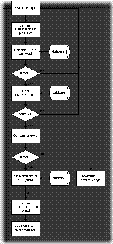
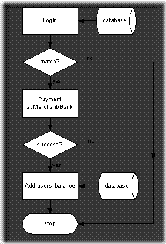
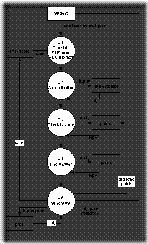
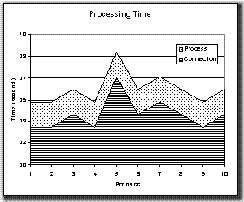
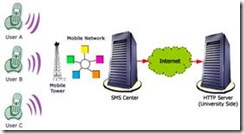
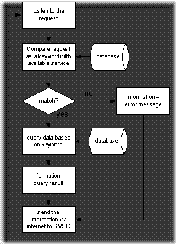


No comments:
Post a Comment